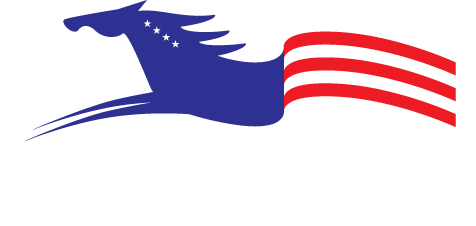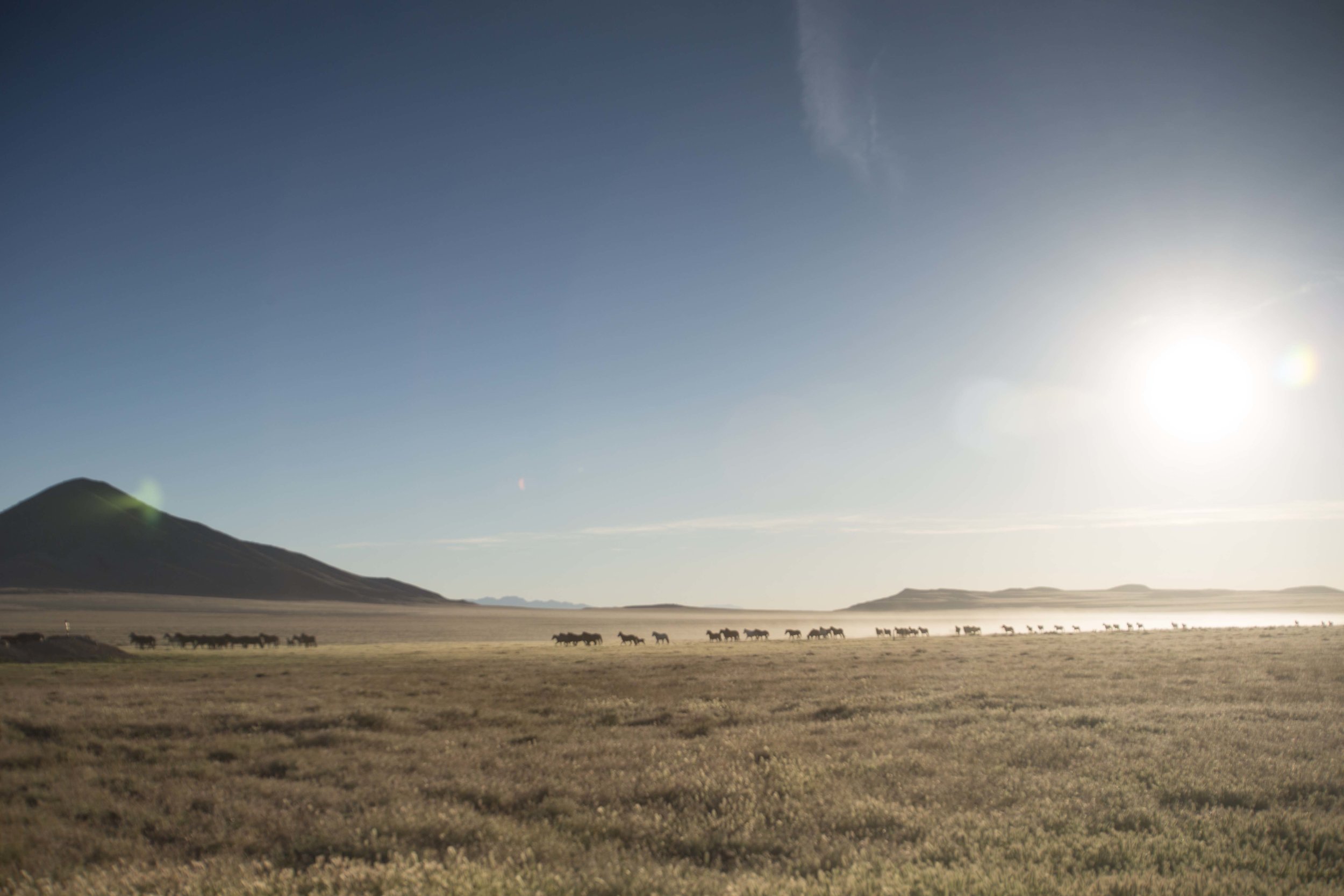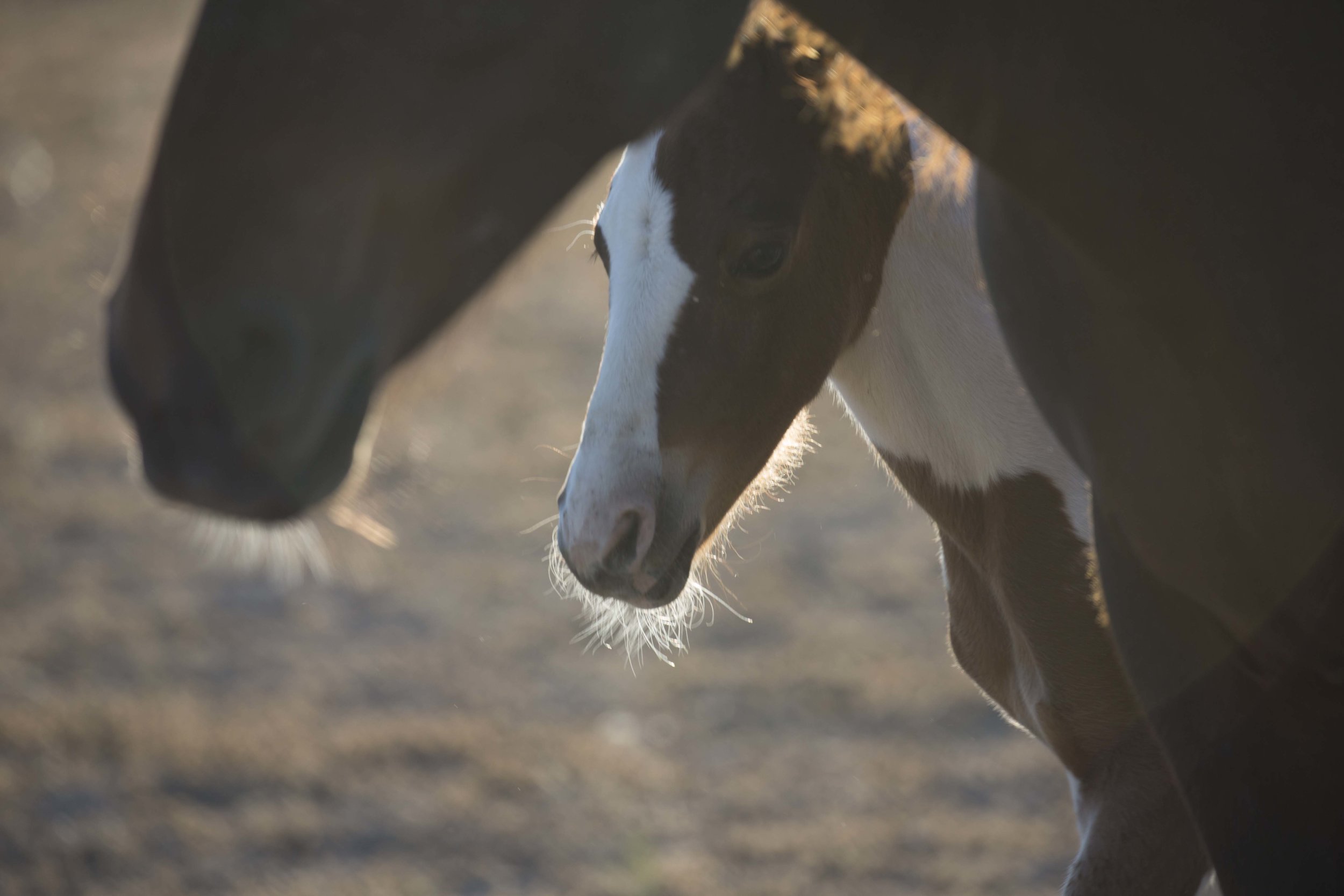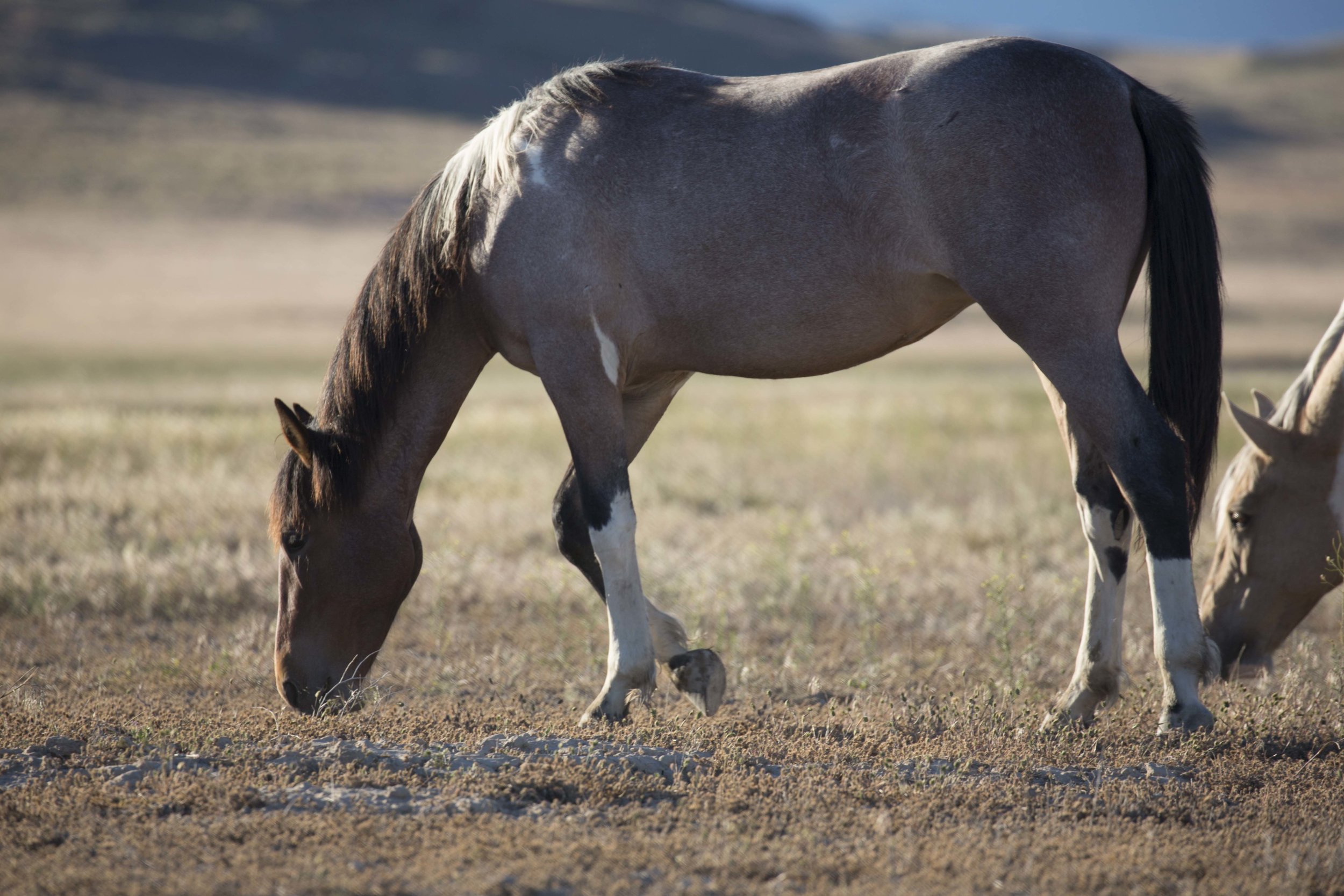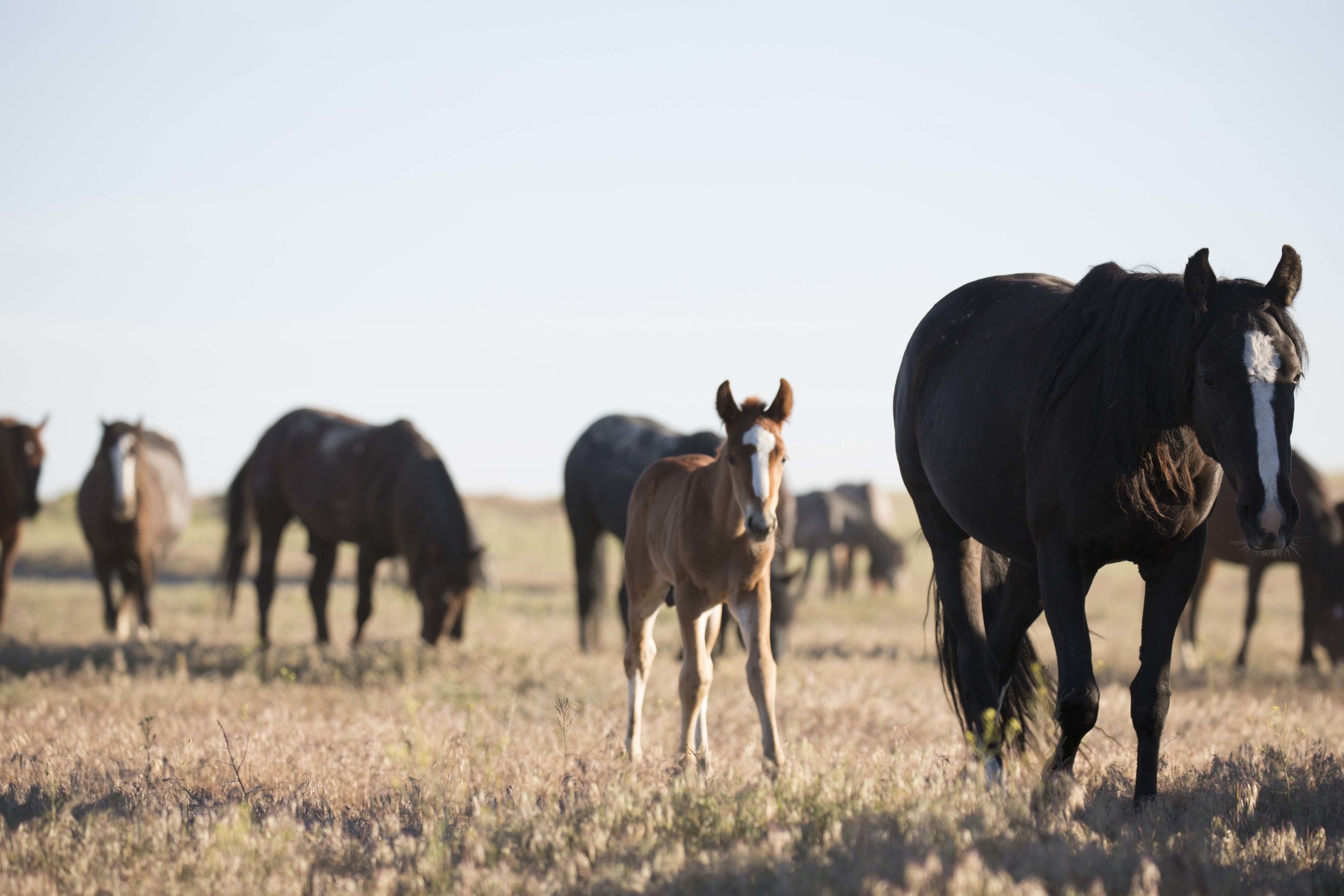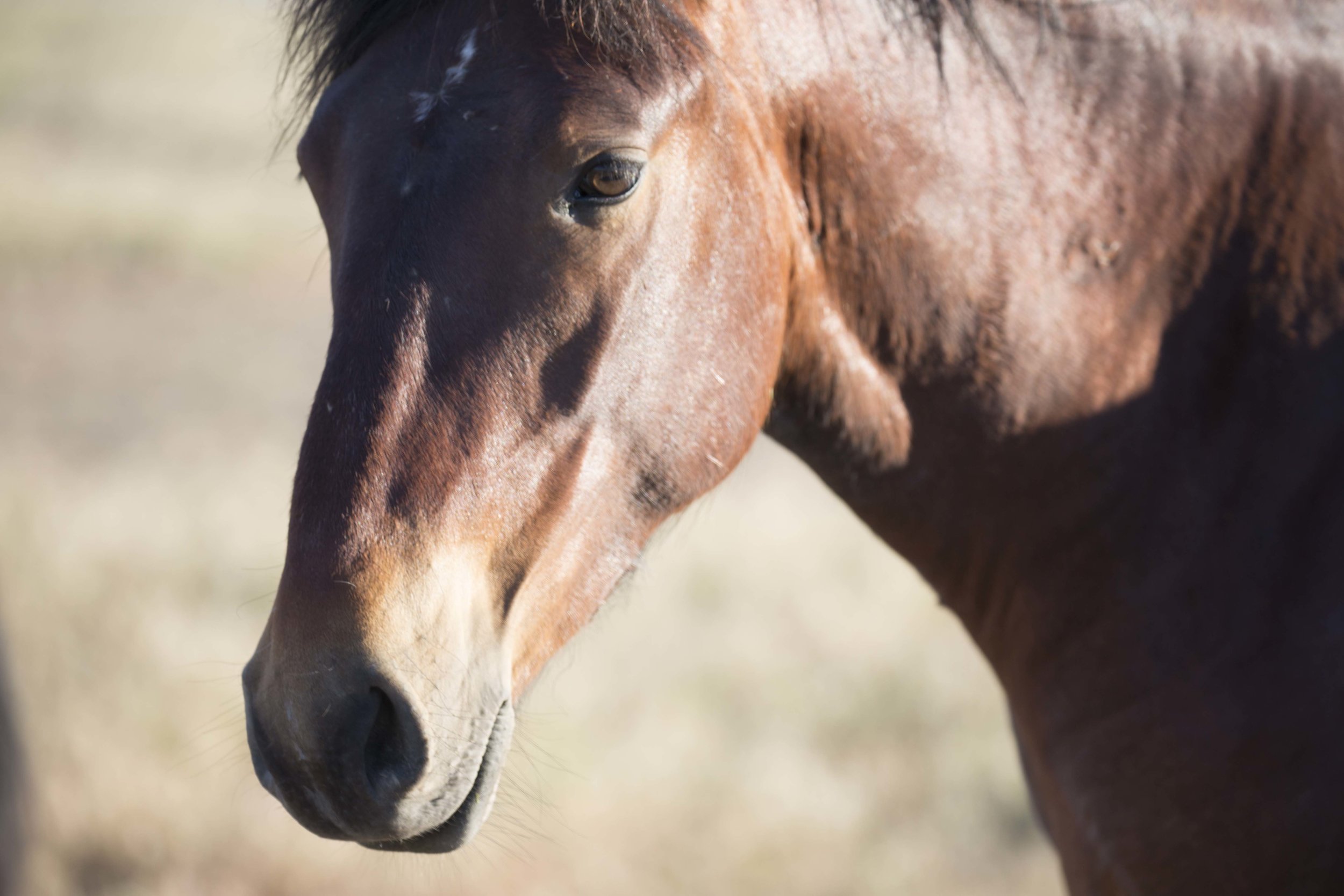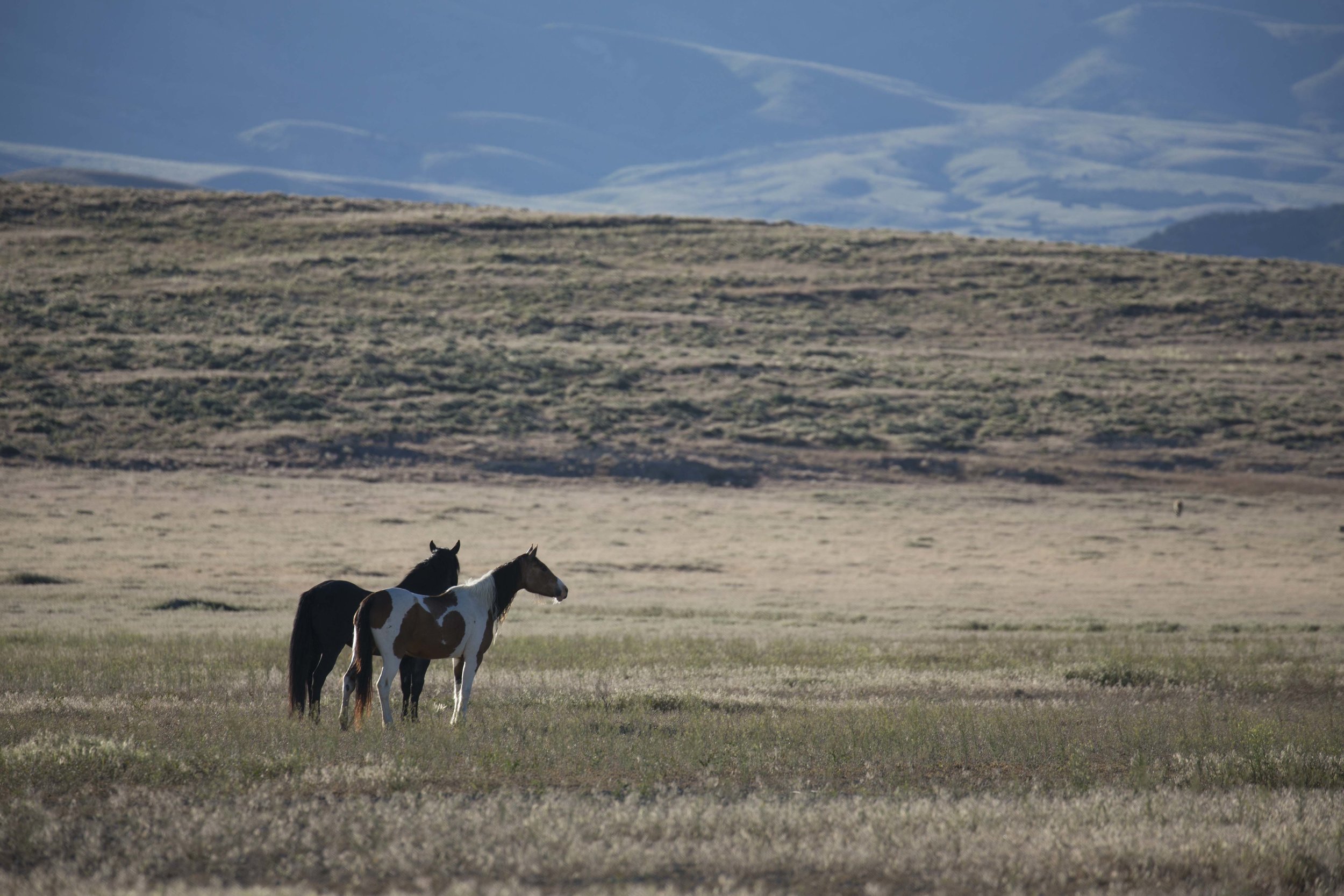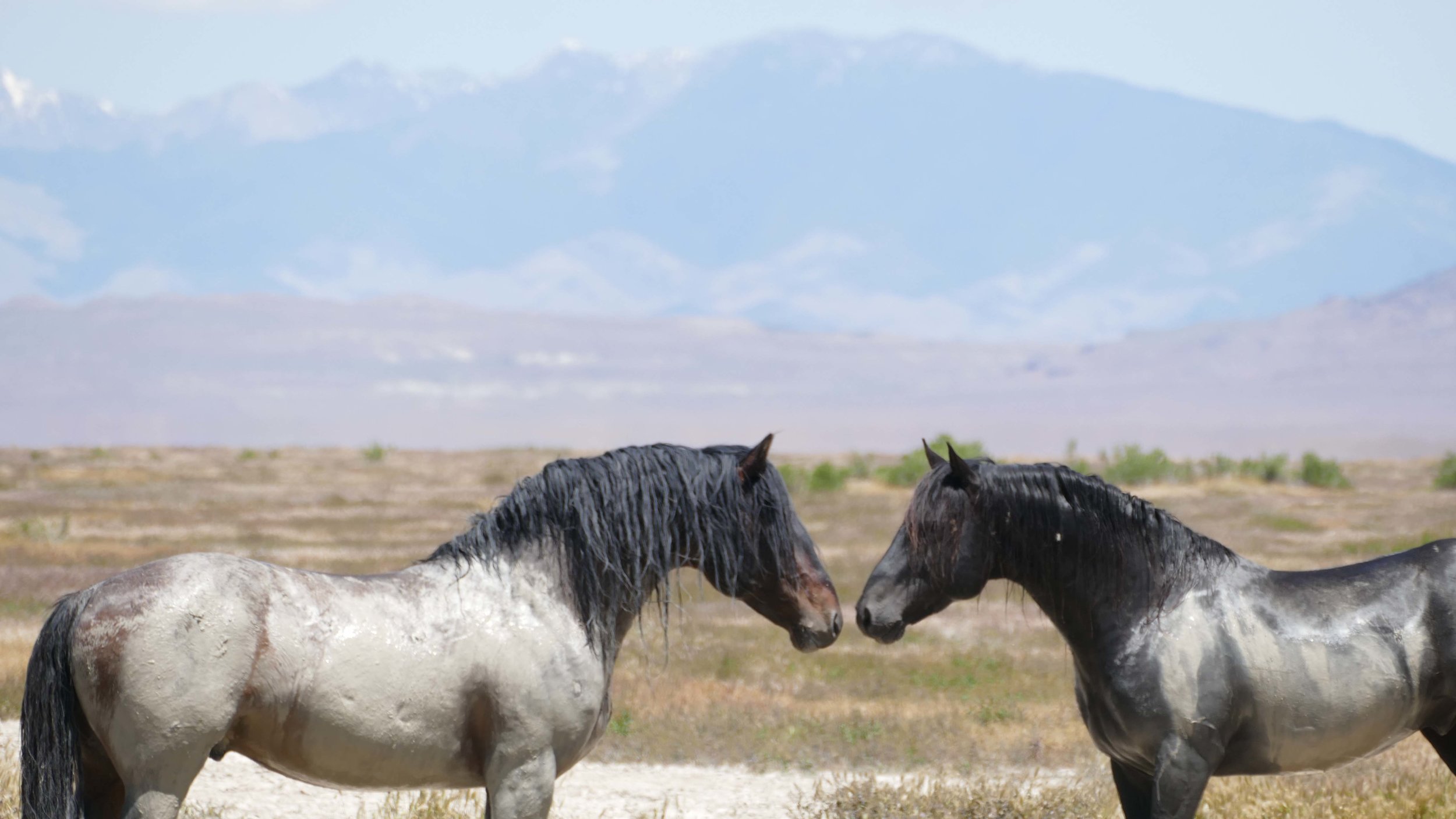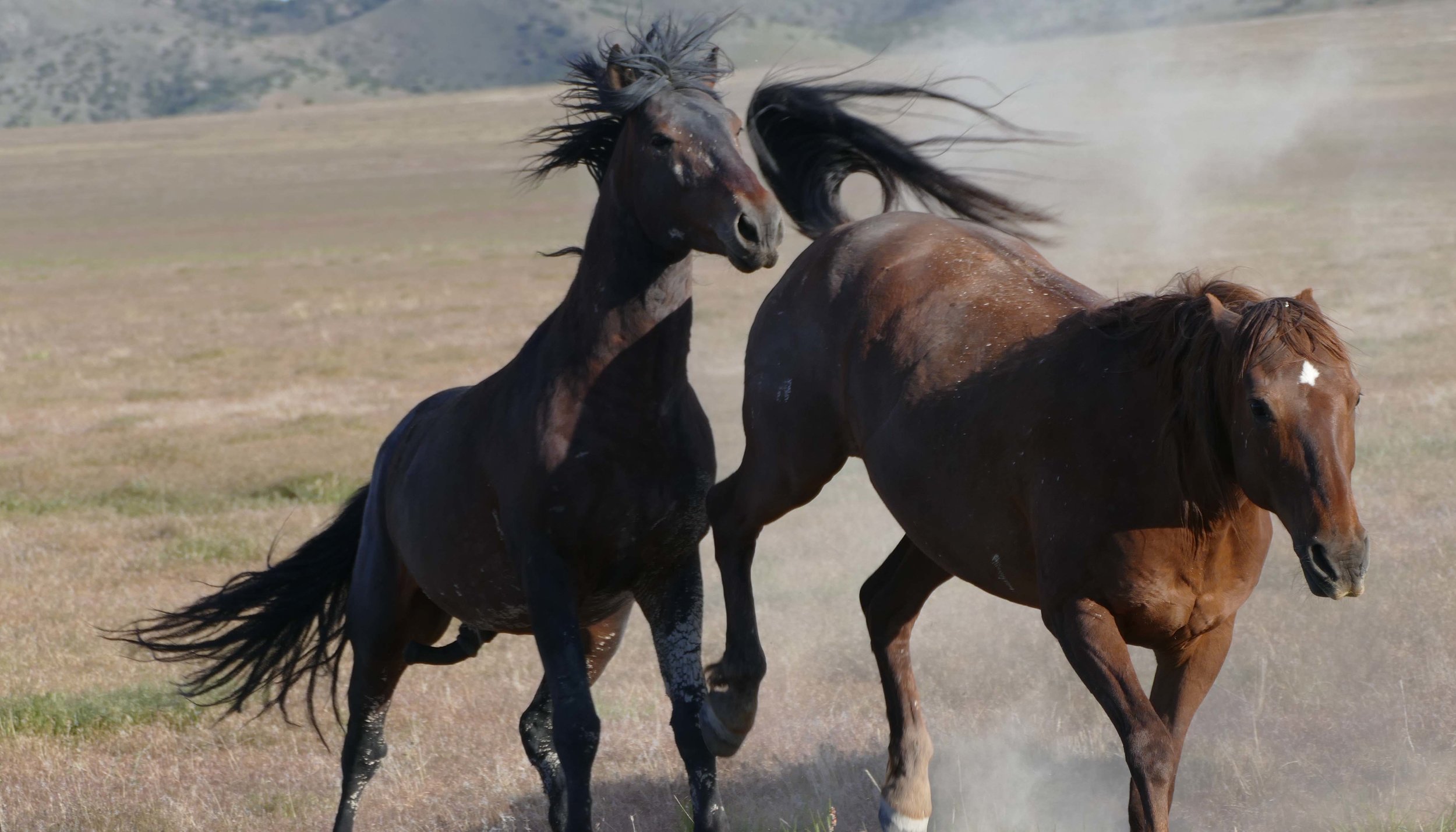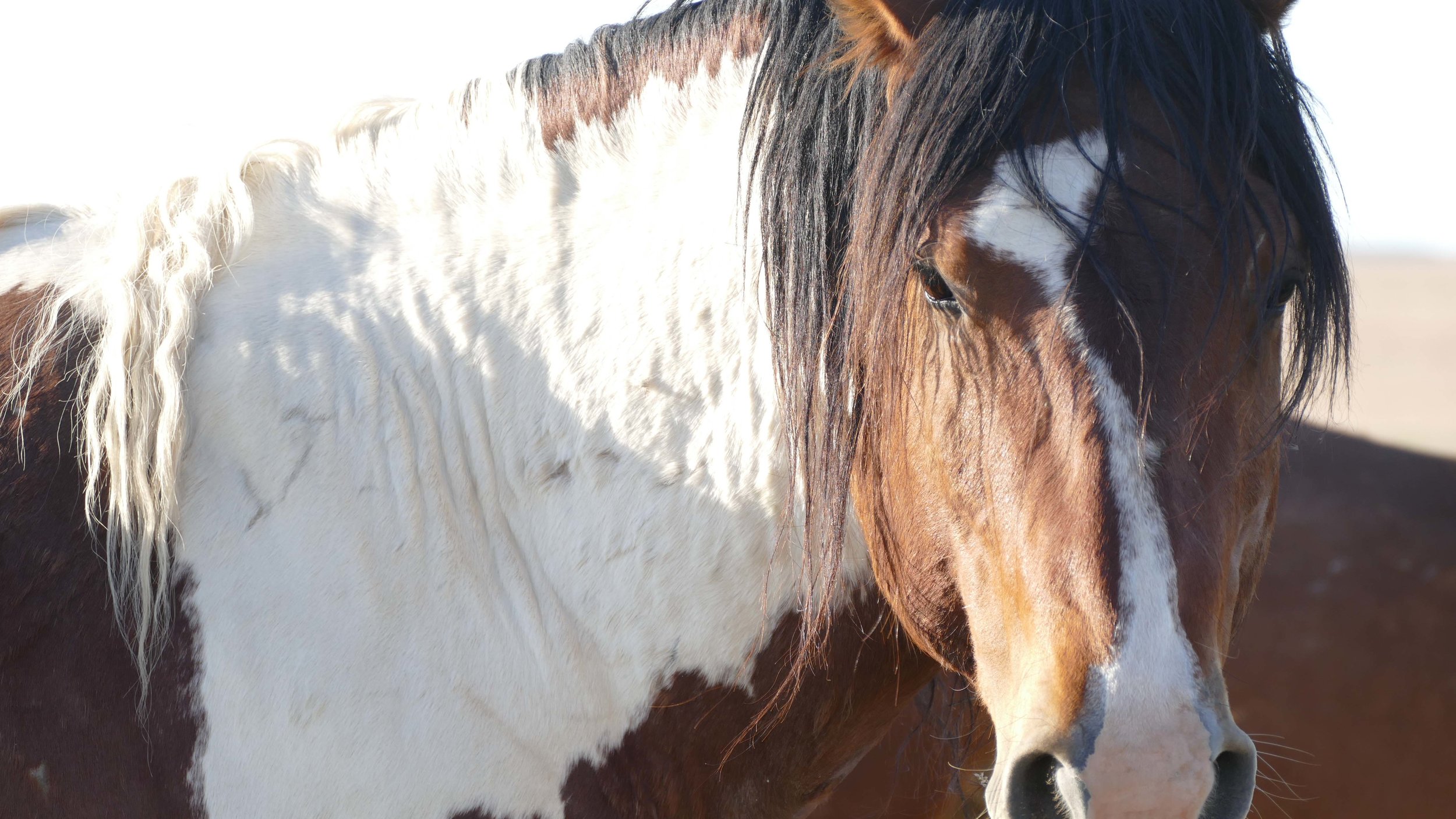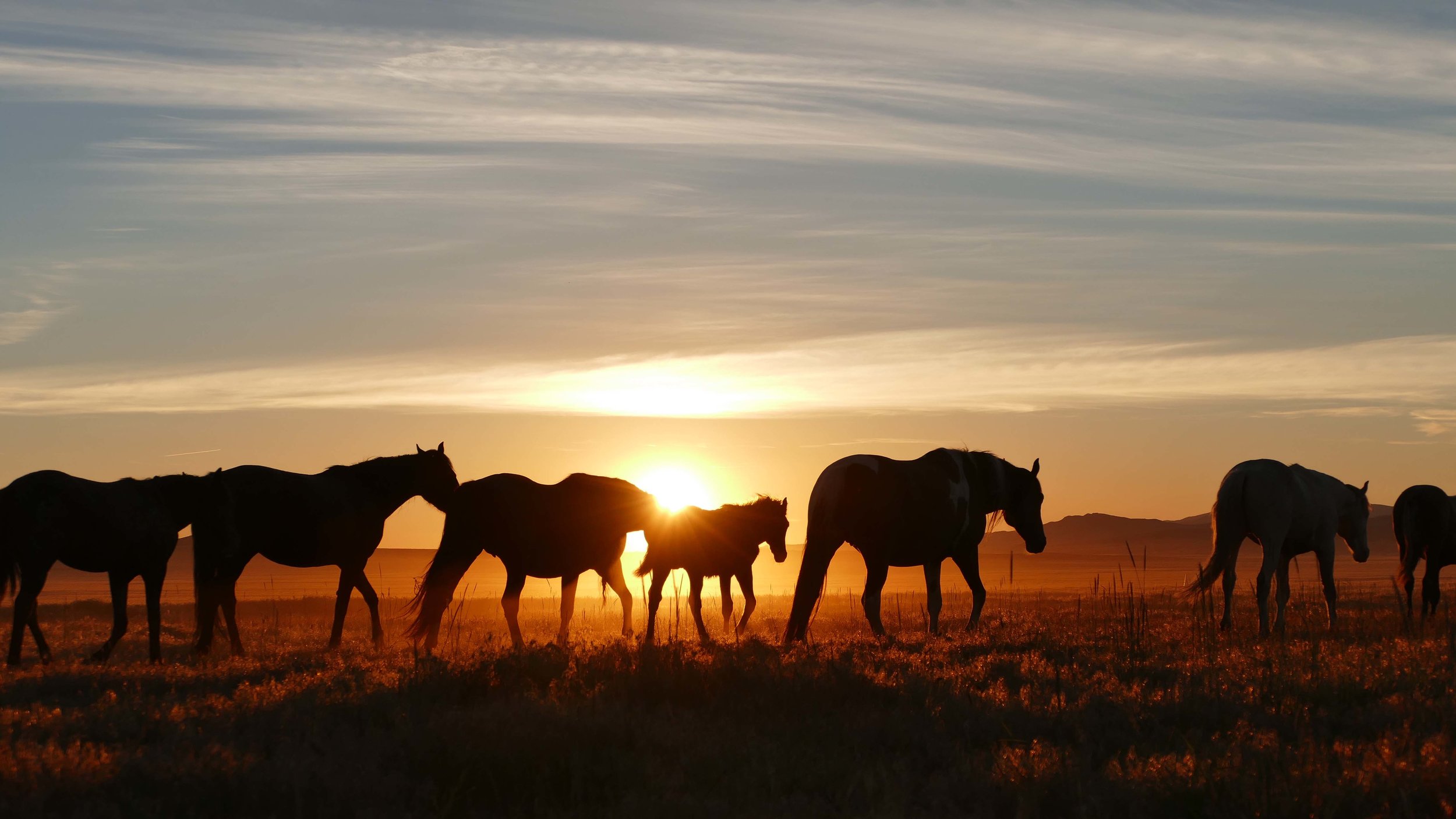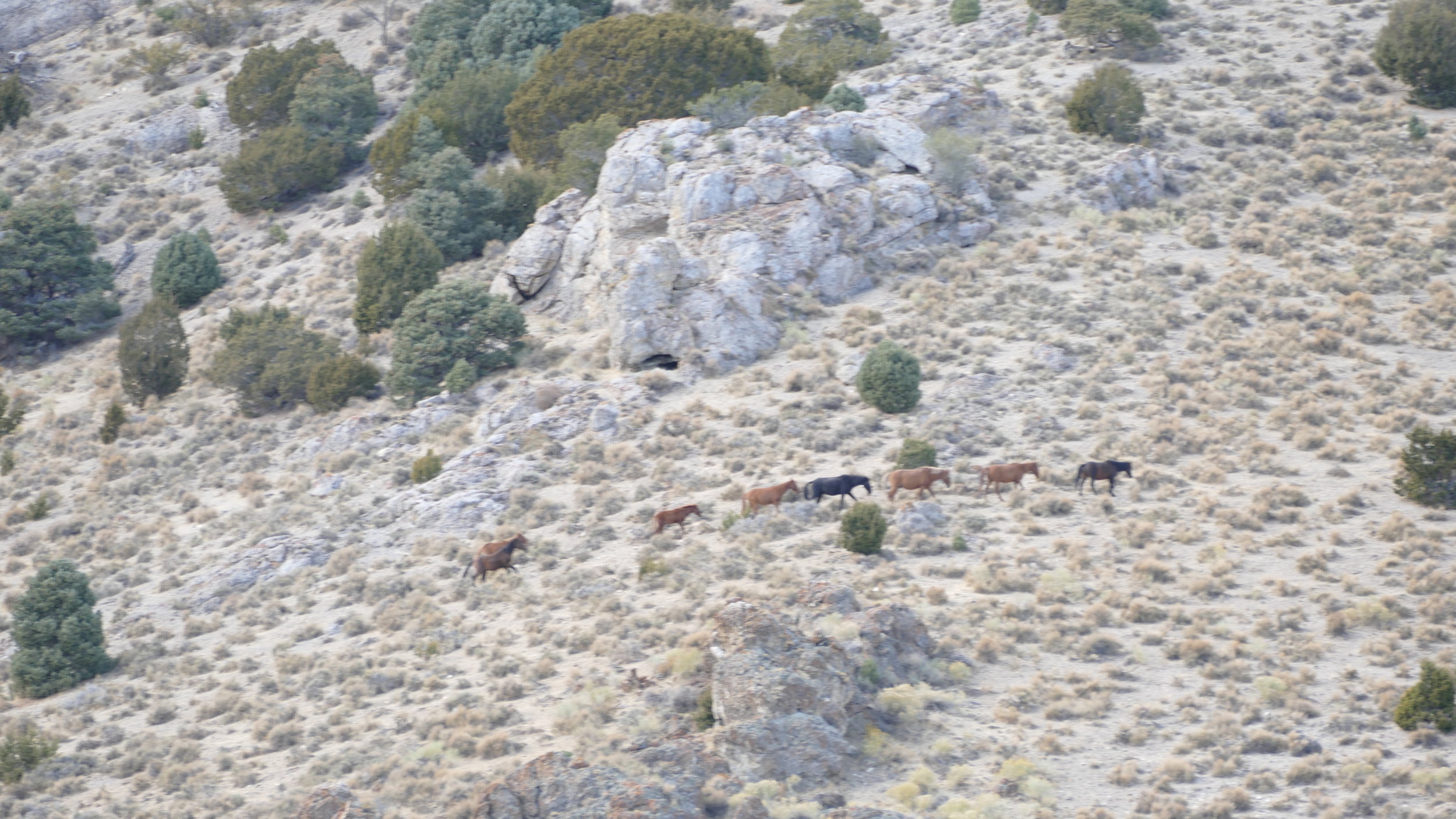A mustang is the free-roaming horse of the North American west that first descended from horses brought to the Americas by the Spanish. Mustangs are often referred to as wild horses, but there is debate over terminology. Because they are descended from once-domesticated horses, they can be classified as feral horses.
In 1971, the United States Congress recognized that “wild free-roaming horses and burros are living symbols of the historic and pioneer spirit of the West, which continue to contribute to the diversity of life forms within the Nation and enrich the lives of the American people.” In the 21st century, mustang herds vary in the degree to which they can be traced to original Iberian horses. Some contain a greater genetic mixture of ranch stock and more recent breed releases, while others are relatively unchanged from the original Iberian stock, most strongly represented in the most isolated populations.
As Americans it is our responsibility to help maintain, manage and protect our national rangeland to ensure that there is balance and stability in the use of our national resources to support the livelihood of mustangs.
WHERE ARE THE MUSTANGS?
FACTS & STATS
72,674
On-Range in 10 Western States
43,813
Off-Range in Corrals & Pastures
235,000
Animals placed into private care
Mustangs live in 10 western states.
Quick Facts
100 years ago, mustangs freely-roamed the North American terrain. Mustangs live in large herds. The herd, or band, typically consists of mares, foals, yearlings guarded by a stallion.
